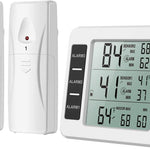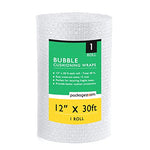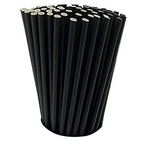You have no items in your shopping cart.
Welcome to our comprehensive guide on establishing a pest monitoring system. Pest infestations can be a nuisance and pose significant risks to both residential and commercial properties. To effectively control and prevent pests, it is crucial to implement a proactive and systematic approach. In this article, we will explore the key steps and strategies to establish a pest monitoring system that will help you identify, prevent, and manage pest-related issues.
Why Establish a Pest Monitoring System?
Pest monitoring systems play a vital role in maintaining a pest-free environment. By proactively monitoring for pests, you can detect early signs of infestation and take appropriate action before the problem escalates. Establishing a pest monitoring system offers several benefits:
- Early Detection: A well-designed monitoring system allows you to identify pest presence at an early stage, enabling you to implement effective control measures promptly.
- Preventive Measures: Regular monitoring helps you identify potential pest entry points and vulnerabilities in your property, allowing you to take preventive measures to reduce the risk of infestation.
- Cost Savings: By detecting pest problems early, you can address them before they become severe, saving you significant costs associated with extensive pest control treatments.
- Health and Safety: Pests can pose health risks and damage property. A monitoring system ensures the safety of occupants and minimizes the potential damage caused by pests.
- Peace of Mind: Knowing that you have a robust pest monitoring system in place provides peace of mind, allowing you to focus on other aspects of property management.
Understanding Common Pests
Before establishing a pest monitoring system, it is essential to familiarize yourself with common pests that can infest your property. Different pests require different control measures, so understanding their behavior, habits, and vulnerabilities is crucial. Here are some common pests you may encounter:
1. Rats and Mice
Rats and mice are among the most common pests found in both residential and commercial properties. They can cause damage to structures, contaminate food, and spread diseases. Signs of infestation include droppings, gnaw marks, and sightings of rodents.
2. Cockroaches
Cockroaches are resilient pests that thrive in warm and humid environments. They can contaminate food, trigger allergies, and spread pathogens. Signs of infestation include seeing live or dead cockroaches, their egg cases, and a musty odor.
3. Termites
Termites can cause significant damage to wooden structures, leading to costly repairs. Signs of termite infestation include mud tubes, discarded wings, and hollow-sounding wood.
4. Ants
Ants are social insects that can invade your property in search of food and water. They leave pheromone trails, making it easier for other ants to follow. Signs of ant infestation include ant trails, nests, and small piles of excavated soil.
5. Bed Bugs
Bed bugs are small, nocturnal pests that feed on human blood. They can cause itchy bites and sleep disturbances. Signs of bed bug infestation include bite marks on the body, bloodstains on bedding, and the presence of live bugs or their excrement.
Creating a Pest-Free Environment
Establishing a pest monitoring system alone is not sufficient. It is essential to create a pest-free environment to minimize the risk of infestation. Here are some measures you can take:
- Seal Entry Points: Inspect your property for any cracks, gaps, or openings that pests can use to enter. Seal these entry points with caulk or weatherstripping to prevent pest entry.
- Maintain Cleanliness: Cleanliness is key to preventing pests. Regularly clean your property, paying attention to areas like kitchens, storage areas, and garbage bins. Dispose of waste properly and promptly.
- Eliminate Food and Water Sources: Pests are attracted to food and water. Store food in airtight containers, fix plumbing leaks promptly, and ensure proper drainage to eliminate water sources.
- Manage Landscaping: Trim bushes and trees away from the property to prevent pests from using them as bridges to access your building. Remove any debris or stagnant water in the vicinity.
- Educate Occupants: Educate residents or employees about the importance of maintaining cleanliness and reporting any signs of pest activity promptly.
Choosing the Right Pest Monitoring Tools
To establish an effective pest monitoring system, it is crucial to select the right tools for the job. Here are some commonly used pest monitoring tools:
- Traps: Traps are a simple and effective way to monitor pests. Different types of traps are available, including sticky traps, snap traps, and pheromone traps. Choose traps based on the specific pests you are targeting.
- Bait Stations: Bait stations can be used to monitor and control pests like rodents. They contain a bait that attracts pests, allowing you to monitor their presence and take appropriate action.
- Monitoring Devices: Electronic monitoring devices use advanced technology to detect and monitor pests. They can provide real-time data on pest activity, allowing for proactive pest management.
Setting Up an Effective Pest Monitoring System
Now that you understand the importance of pest monitoring and have selected the right tools, it's time to set up your pest monitoring system. Follow these steps to establish an effective system:
- Identify Monitoring Points: Determine the areas in your property where pests are most likely to be present. These can include storage areas, kitchens, basements, and entry points.
- Install Monitoring Tools: Place the selected traps, bait stations, or monitoring devices in the identified monitoring points. Follow the manufacturer's instructions for proper installation.
- Regularly Inspect and Monitor: Check the monitoring tools regularly for signs of pest activity. Record your observations and note any changes in pest activity over time.
- Take Appropriate Action: If you detect pest activity, take immediate action to address the issue. This can include implementing targeted pest control measures or seeking professional assistance if necessary.
- Analyze Data and Improve: Use the data collected from your monitoring system to analyze trends and patterns in pest activity. Adjust your pest control strategies accordingly to improve effectiveness.
Frequently Asked Questions (FAQs)
1. What are the benefits of establishing a pest monitoring system?
Establishing a pest monitoring system offers benefits such as early detection of pests, preventive measures, cost savings, health and safety, and peace of mind.
2. How can I identify common pests in my property?
Common signs of pest infestation include droppings, gnaw marks, sightings of live pests, nests, and unusual odors. If you suspect pest activity, it is advisable to consult with a pest control professional for proper identification.
3. What should I do if I find signs of pest activity during monitoring?
If you find signs of pest activity, take immediate action to address the issue. This can include implementing targeted pest control measures, such as traps or baits, or seeking professional assistance for more severe infestations.
4. How often should I inspect my pest monitoring system?
Regular inspections are crucial to detect pest activity early. Depending on the level of pest risk and the specific property, inspections can be conducted weekly, monthly, or quarterly. Adjust the frequency based on your observations and pest control needs.
5. Can I establish a pest monitoring system on my own, or should I hire a professional?
Establishing a basic pest monitoring system can be done on your own using commercially available tools. However, for more complex or severe pest infestations, it is advisable to seek the expertise of a professional pest control service.
6. How long does it take to see results from a pest monitoring system?
The time it takes to see results from a pest monitoring system can vary depending on the severity of the infestation and the effectiveness of the control measures implemented. However, with consistent monitoring and appropriate action, you should start seeing improvements within a few weeks.
Conclusion
Establishing a pest monitoring system is a proactive approach to pest control that helps in early detection, prevention, and management of pests. By understanding common pests, creating a pest-free environment, choosing the right tools, and implementing an effective monitoring system, you can minimize the risks associated with pest infestations. Remember to regularly inspect and analyze the data collected to improve your pest control strategies. With a well-established pest monitoring system in place, you can enjoy a pest-free environment and peace of mind.








